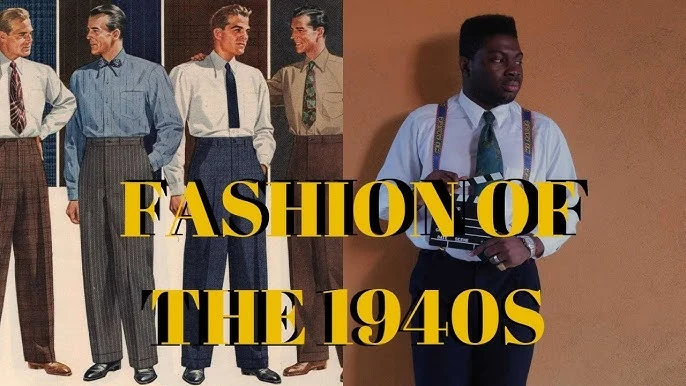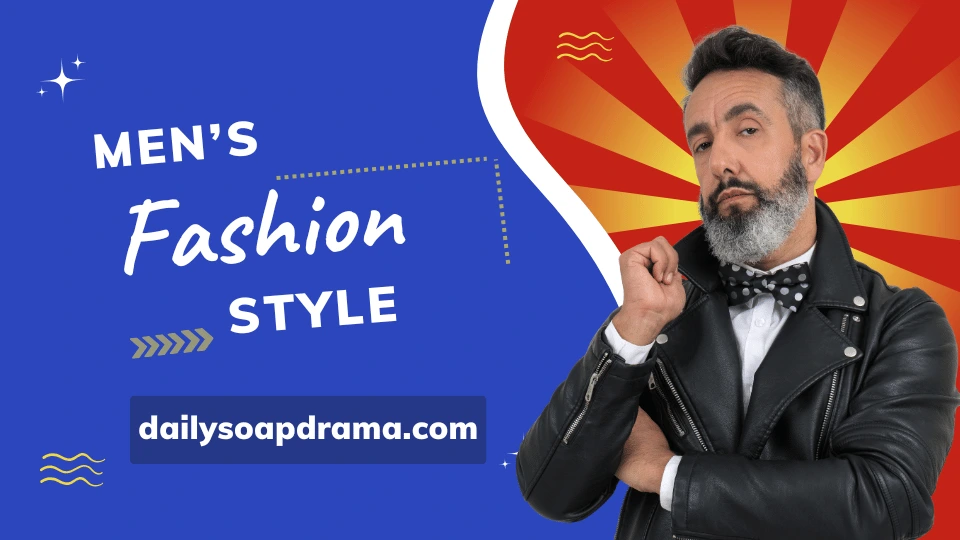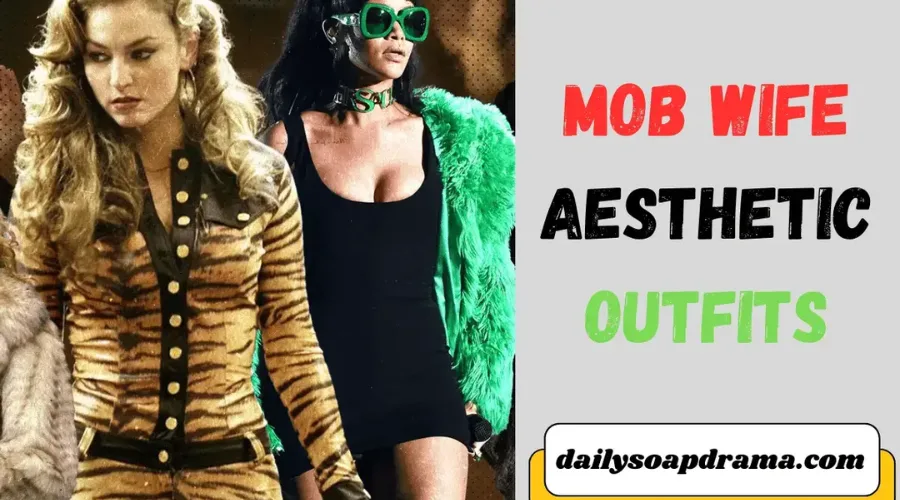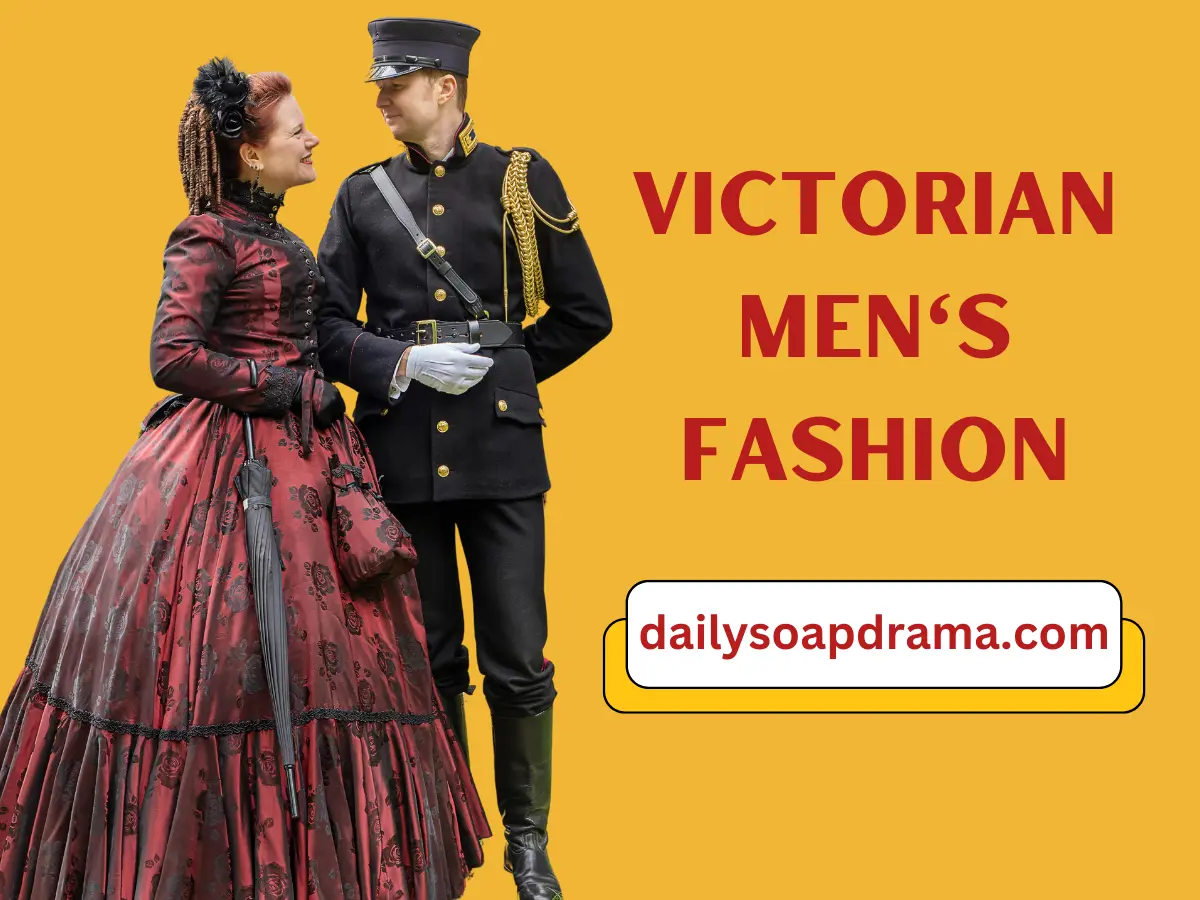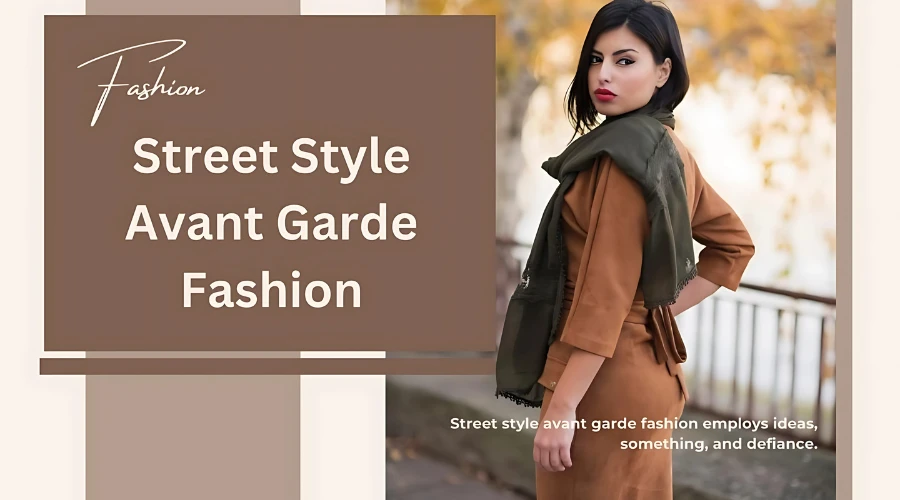World War II raged throughout the first half of the 1940s, yet the influence of such a sad global catastrophe was still felt and represented in men's clothes.
Rationing made textiles often unavailable. It also had an effect on clothing style. There were new rules in effect that prohibited individuals from just wearing anything they chose, and even if they could, there were restrictions. Of course, there was a fresh societal development that influenced menswear.
Men's Fashion in the 1940s: What We Can Learn and Apply Today
Suits

The suits of the 1940s were distinguished by their boxy structured design, heavy fabrics, large shoulders, and nipped waists. This is a dramatic contrast to the easygoing designs of the previous decade and today's fitted suits. Due to wartime fabric scarcity, suits were simpler, with fewer pockets (often just 1-3) and limits on pocket flaps, belted features, and lapel proportions. This also saw the use of patch pockets (exposed pockets sewed onto the exterior of a jacket, akin to modern workwear fashions) to save fabric while also emulating battle fatigues.
During the war, wearing vintage suits was deemed patriotic, in contrast to the affluence of the late 1940s. when fashion was fast developing and customers were eager to keep up with the newest trends. This meant that although new designs were being developed, many men recycled old styles and continued to wear them to support the existing constraints. This resulted in a very unique and original trend in menswear. Suits were traditionally worn to match, but due to shortages, men began mixing and matching suit tops, bottoms, shirts, and sweaters. This enabled certain classic designs to develop while also improving the wearability of most men's wardrobes.
When it comes to textiles, most military uniforms are made of wool, thus most civilian apparel is made of a wool/rayon mix that is durable and suited for numerous seasons. Pinstripes and subdued hues continued to dominate, but the new mix-and-match design added lightness. Men's suits grew more lavish after the war, with broader lapels, more prominent shoulder padding, and bigger trousers, evoking the rich fashions of the 1950s.
Recommended to read: Mens Semi Formal Attire: for Weddings, Parties, and Business
Shirts
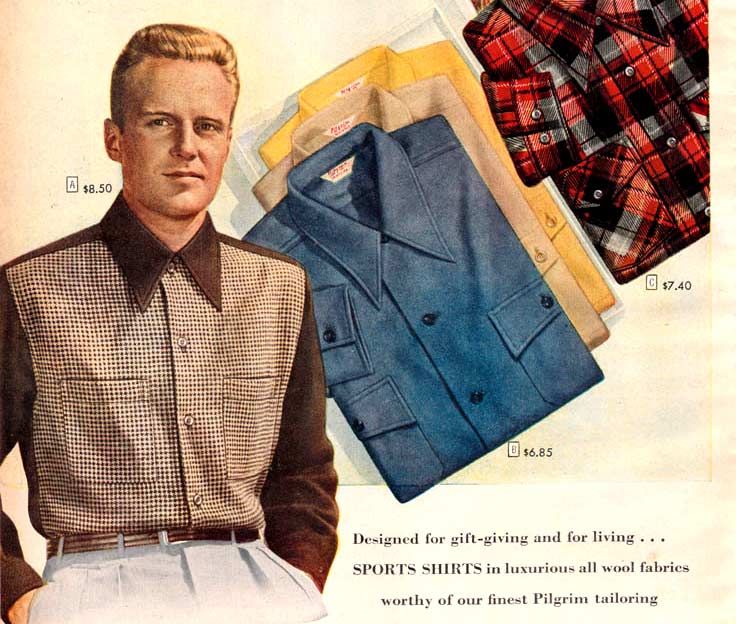
Shirt designs of the 1940s were rather basic, with an emphasis on utility and comfort. However, advances in fabric technology led to the birth of'micro patterns,' plaid, and other motifs that were commonplace in the late 1940s.
The most popular shirt types were the simple white dress shirt and utility shirt, which were important for both workers and servicemen. Both were considered'soft collars,' which were affixed to the shirt and resembled the dress shirts that men wear today. However, in the early 1940s, men's fashion leaned toward'spear points' or collars with very long tips; later in the decade, they retreated to become much shorter and closer to the neck.
Collar stays were also popular at the period; they were detachable but provided a crisp, tailored appearance when required, as searching became less fashionable - another fantastic flexibility characteristic seen in men's 1940s design. Finally, camp shirts, which were a staple of 1940s men's fashion, marked a significant shift toward more informal attire. These shirts were short-sleeved and lightweight, with a loose fit and one or two breast patch pockets. For a contemporary comparable, consider a bowling shirt or a Cuban shirt, both of which have had a recent rebirth.
Pants

Trousers of the 1940s were high-waisted, reflecting the era's style of a manly body with a wide chest and a slim waist. The leg cut was broader than it is now, although trousers were restricted during the war. To save fabric, pant openings in the United States were limited to 9.5 inches (measured flat).
This is when the great Zoot Suit began to take control. This suit was enormous in every manner, with a significantly longer jacket that often reached the low thigh and excessively broad trousers that seem big even by today's standards. This design was often seen as unpatriotic due to the usage of excess cloth and a less 'traditionally' manly form. The style became especially popular among disadvantaged populations, who were often pushed out or refused access to mainstream culture; they adopted the zoot suit as a form of protest, utilizing their clothing to make a statement.
Sweater and Knitwear
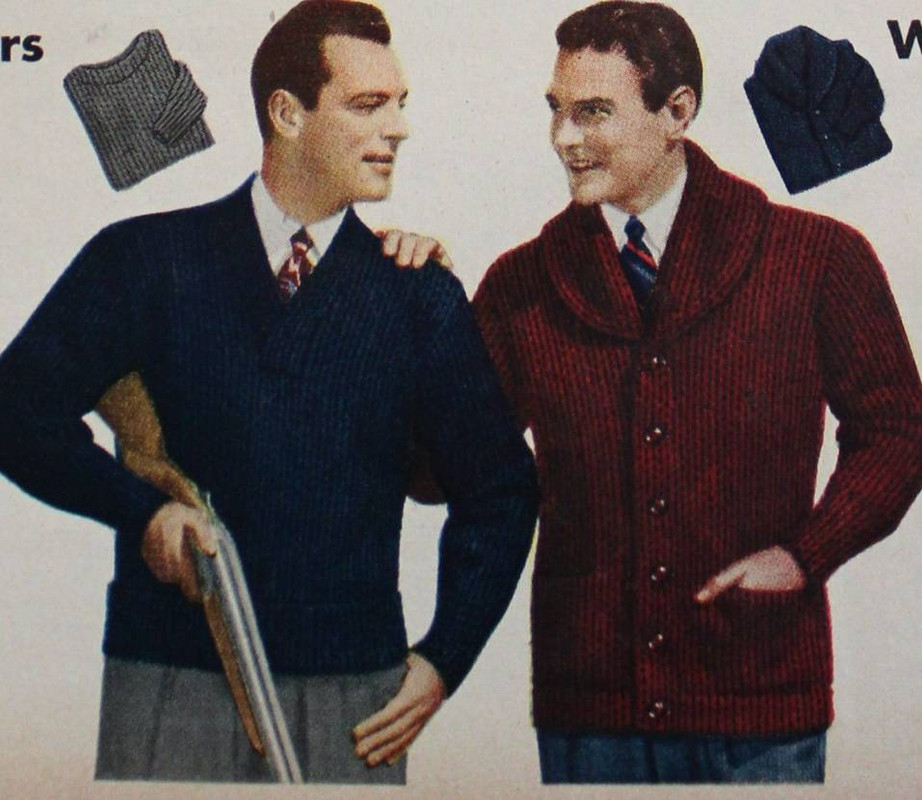
The 1940s saw a substantial shift in men's sweaters and knitwear, driven by the practical necessities of wartime and post-war rehabilitation. Sweaters were not only a fashion statement, but also a necessary layering garment owing to fabric scarcity and the necessity for warmth. The decade witnessed the popularization of the crew neck sweater, commonly worn over a collared shirt, adding a sense of refinement to daily outfits.The preferred material was wool, which is recognized for its toughness and warmth.
V-neck sweaters were fashionable, particularly when worn with a tie beneath, combining casual comfort with a semi-formal look. This style was especially popular among professionals and academics, representing a balance of intellectualism and approachability. Visit our dedicated fashion hub here.
Jackets & outerwear

Men's coats and outerwear were heavily inspired by military designs during World War II. The bomber jacket, initially designed for pilots, became a civilian wardrobe staple, valued for its warmth and durability. These jackets, made of leather or strong canvas and lined with shearling or wool, were useful for both pilots and the general population who were exposed to the cold.
Another military-inspired garment, the trench coat, became popular among civilians due to its usefulness and appearance. Originally created for British Army officers prior to World War I, it gained popularity for its water-resistant fabric and prominent belt, epaulets, and storm flaps. The trench coat was a mark of refinement, serving as an important outerwear garment for both businesspeople and elegant folks. Movie stars such as Humphrey Bogart (Casablanca) and Peter Sellers (the original Pink Panther) contributed to its popularity.
Popular Shoe Styles of the 1940s

Footwear in the 1940s was all about durability and style. Leather shoes were the norm, with styles like oxfords and brogues being particularly popular. These shoes were designed to be sturdy and long-lasting, reflecting the practical nature of men's fashion in the 1940s.
Read also: The Top Japanese Men's Fashion Trends of the Year
Men’s Formalwear in the 1940s
Despite wartime limitations, men's formalwear of the 1940s remained rather conservative, with suits keeping a rigid appearance. During this time, the double-breasted suit was very fashionable, with broad lapels and a nipped-in waist that highlighted a manly, V-shaped torso. However, as previously said, during the war, rationing limited this approach.
Single-breasted suits were also widely used. They were preferred for their adaptability and simple design (again, owing to fabric scarcity). These suits often had two or three buttons and, although less formal than double-breasted suits, had a sleek and streamlined design ideal for both work and social settings.
Formalwear was made of a variety of materials, including woolen textiles for the colder months and lighter materials like linen and cotton for the summer. However, owing to fabric shortages (are you surprised?), there was a noticeable movement toward the use of synthetic materials and mixes, which were more easily accessible and deemed practical during the war.
Formal shirts of the 1940s were mostly white, representing elegance and simplicity. The pointed collar was a popular style, creating a crisp and sophisticated appearance that matched the suit. For a more formal look, older men continued to wear detachable collars, which allowed for a cleaner and more polished presentation.
Casual Men's Fashion in the 1940s
Everyday Wear: 1940s Men's Casual Wear
While suits ruled the formal side of men's design, "1940s men's casual wear" focused on comfort and simple. Casual wear usually consists of pants, button-down shirts, and knitwear sweaters or jackets. The idea was to have a neat and professional appearance even in more informal surroundings. This period also noticed the rise of the "shirt and slacks" appearance, a flexible outfit that could be dressed up or down depending on the occasion.
The Rise Of Sportswear.
Sportswear also became a key part of "casual men's fashion in the 1940s". Bomber jackets, polo shirts, and high-waisted pants were popular. These items were created to be functional and comfortable, reflecting men's busy lives of the period. Many sporting products included epaulettes and huge pockets, indicating the influence of military uniforms in their design.
Men’s Accessories in the 1940s
The Role of Accessories in 1940s Men's Fashion
Accessories were critical in improving the overall style of "men's fashion in the 1940s fashion trends". Hats were a common accessory, with fedoras and trilbys especially popular. These hats offered a touch of luxury to any clothing and were often worn tipped to one side for a fashionable appearance.
Hats

In the 1940s, hats were an essential component of a man's outfit, indicating both style and social position. The fedora, with its broad brim and indented crown, was a popular choice among the middle class due to its combination of refinement and utility.
Trilby hats, similar to fedoras but with a thinner brim, were popular for their more modern appearance. Among the working class, the newsboy hat and beret represented the era's combination of utility and flair.
Read also: Outerwear Icons: 6 Of The Most Masculine Jackets For Men
Watches

Wristwatches were a popular accessory for men in the 1940s, shifting from military to daily use. The designs were basic yet attractive, with metal cases, leather straps, and clear, easy-to-read dials. Chronographs and pilot watches gained popularity throughout the decade, reflecting a passion with accuracy and aviation.
Rolex, which had already established itself by the 1940s, proceeded to develop with the release of the Datejust in 1945. the first timepiece with an automatically changing date display. Omega's fame in the 1940s was attributed to its function as an official timekeeper for the British Royal Air Force and other Allied military forces.
Jaeger-LeCoultre, noted for its technological advancements, launched the Reverso in the 1930s, although it remained popular until the 1940s. Its distinctive reversible casing was originally meant to protect the watch face during polo tournaments, making it a popular choice among athletes and military personnel.
Ties

Ties of the 1940s ranged from dramatic, broad patterns to more muted, narrow forms, reflecting the shifting fashion trends and availability of the time. Silk was the chosen fabric, with hand-painted motifs and customisation to highlight something about the guy wearing it proudly. The bow tie also remained popular in formal dress, providing an alternative to the standard necktie for special occasions.
Suspenders and Belts
Suspenders were fashionable throughout the 1940s, particularly with high-waisted pants, giving both practicality and a reference to classic design. However, belts stole the stage as pants accessories. This also led to a western/cowboy rebirth, with men's casual dress including loosened western shirts and accessories.
Glasses
In the 1940s, eyeglasses were round or somewhat oval in form, with metal or thick plastic frames. These spectacles brought intellectual attractiveness to a man's appearance, and aviator sunglasses are becoming more fashionable owing to their military affiliation.
More Popular Men's Accessories in the 1940s
Leather gloves, pocket squares, and cufflinks were fashionable accessories to enhance a man's appearance. Leather briefcases and wallets have become emblems of professionalism and prestige. Military-inspired accessories, such as dog tags and belt buckles, even made their way into civilian dress, demonstrating the war's long-term influence on 1940s style.
Men’s Grooming Trends in the 1940s
Common Men's Hairstyles in the 1940s

"Men's fashion in the 1940s" relied heavily on hairstyles. The most popular style was the short back and sides, with the top hair left longer and slicked back. This clean and polished style was simple to maintain and better the strong lines of 1940s fashion.
1940s Facial Hair
In the 1940s, facial hair was kept to a minimum, and clean-shaven features were the norm. Mustaches were the exception rather than the norm, and when worn, they were usually carefully groomed. This grooming practice reflected the era's focus on order and uniformity, which was heavily inspired by military standards.
Read also: Capsule Wardrobe Men
Famous Men's Fashion Designers Of The 1940s
Designers, Hollywood celebrities, and military heroes all had an impact on the fashion world in the 1940s. Designers such as Hardy Amies and Brooks Brothers responded to wartime restraints by inventing with restricted materials while remaining elegant. Humphrey Bogart and Cary Grant, for example, popularized trench coats and fitted suits. Meanwhile, military luminaries such as General Douglas MacArthur unintentionally became fashion idols. with their aviator sunglasses and utilitarian but elegant military uniforms influencing civilian design.
How to Wear 1940s Men’s Fashion Today
To incorporate 1940s design into today's wardrobe, concentrate on important items such as high-waisted pants, double-breasted suits, and fedoras. Modern versions of the bomber jacket and Hawaiian shirts may offer a retro feel to casual attire. For a timeless appearance, use traditional Oxford shoes or brogues and accessorize with simple leather belts and vintage-style timepieces.
Conclusion
Exploring "men's fashion in the 1940s" has deepened my respect for the era's grace and simplicity. Despite the hardships created by World War II, men in the 1940s maintained a utilitarian but refined sense of style. From classic suits to casual clothes, 1940s design continues to influence current trends. Understanding the essential characteristics of 1940s fashion allows us to adopt some of these classic trends into our modern wardrobes.
FAQ's
What ties did men wear in the 1940s?
They may vary from basic knitted ties knotted in a Winsor knot to an art deco design tied in a four-in-hand knot. In the 1940s, men's ties were often patterned on the wearer's hobbies and interests, such as painting, fishing, and hunting.
What were men like in the 1940s?
In the early 1940s, American society required its males to exhibit certain attributes that constituted masculinity. In addition to daring and bravery, men strived to cultivate attributes like as aggressiveness, competitiveness, stoicism, toughness, and independence in order show to others their true masculinity.
What type of pants did men wear in the 40s?
Work pants had flat fronts and a single leg crease. Leg widths were also smaller than in suit or sports trousers. Tan, brown, navy, and hunter green were the most common colors, with plaid sometimes thrown in for variety.
What is 1950s mens fashion?
Boxy jeans were popular among younger men, whereas gray slacks and khaki trousers were preferred for more formal events. Bow ties, fedora hats, penny loafers, and pocket squares enhanced the uniqueness and sophistication of clothing.
How to dress in your 40s male?
- Build a Solid Foundation. The secret to a great closet is versatility in basic pieces.
- Leave the Graphic Tees in the Past.
- Ignore Trends, Stick to the Classics.
- Streamlined Footwear.
- It's All in the Details.

